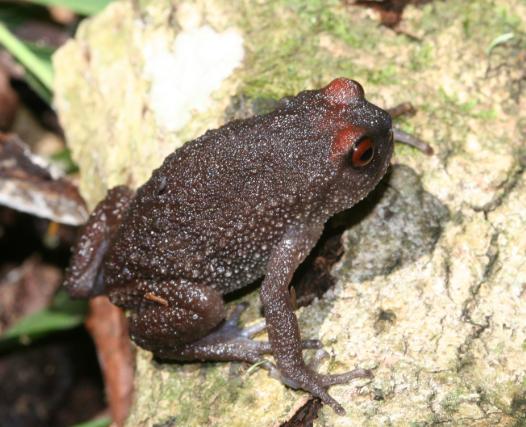Geofrey Samson Mugini
Conservation and Population Assessment of Callulina laphami in the North Pare Mountains, Tanzania. This project seeks to assess and improve the conservation status of Callulina laphami, a critically endangered frog species endemic to the Kindoroko and Minja Forest Reserves in the North Pare Mountains of Tanzania. This species, which occupies a restricted range of less than 16.5 km² at elevations between 1,730 and 2,000 meters above sea level, is highly specialized and depends on the integrity of montane forest ecosystems. C. laphami is arboreal and is typically found in trees or hidden among leaf bases, making it highly sensitive to environmental changes and forest degradation. Despite the International Union for Conservation of Nature (IUCN)'s classification of the species as Critically Endangered, there is currently limited information on the species’ population size, distribution, ecology, and specific threats. Ongoing habitat destruction driven by human activities, particularly agriculture, logging, and settlement expansion, poses a serious threat to the survival of this unique amphibian. Furthermore, public awareness of the species and its ecological importance remains very low, undermining local support for its protection.

Callulina laphami from Kindoroko Forest Reserve, North Pare Mountains. ©Chem.
The main aim of this project is to conduct a comprehensive field assessment of Callulina laphami to determine its current population size, distribution, and habitat conditions within the Kindoroko and Minja Forest Reserves. Additionally, the project will assess the extent of forest degradation and identify key anthropogenic threats contributing to habitat loss. It is equally important to raise awareness among local communities about the species and the critical role of forest conservation. This will involve outreach programs, educational materials, and engagement with local stakeholders to build interest and participation in conservation. Finally, the project aims to develop a strategic conservation and management plan that combines scientific findings with community-driven conservation approaches. By integrating ecological data with sustainable land-use practices, the project will contribute to the long-term survival of C. laphami while supporting broader efforts to preserve the ecological integrity of the North Pare Mountains.